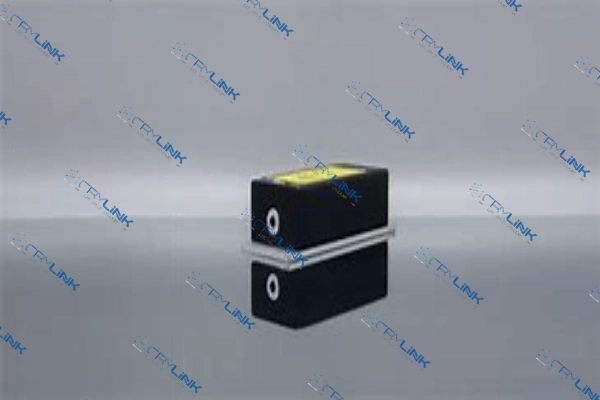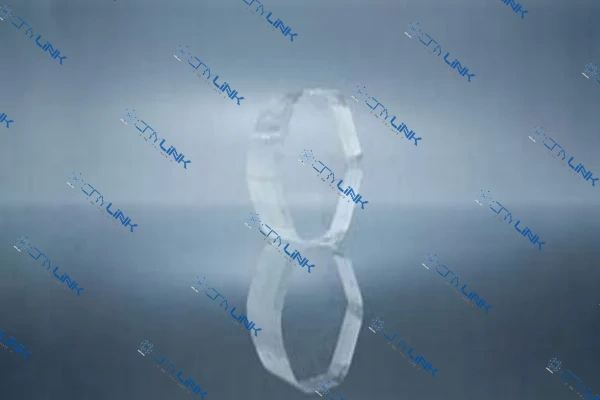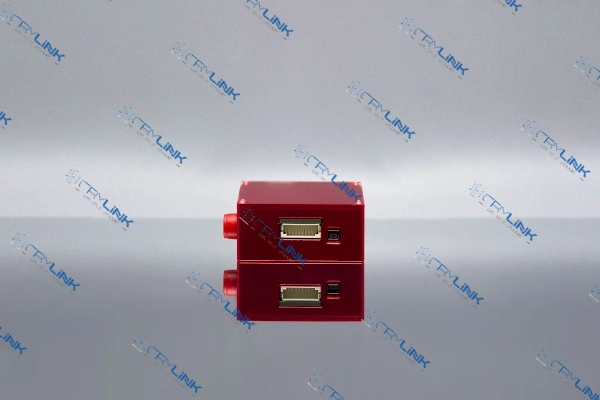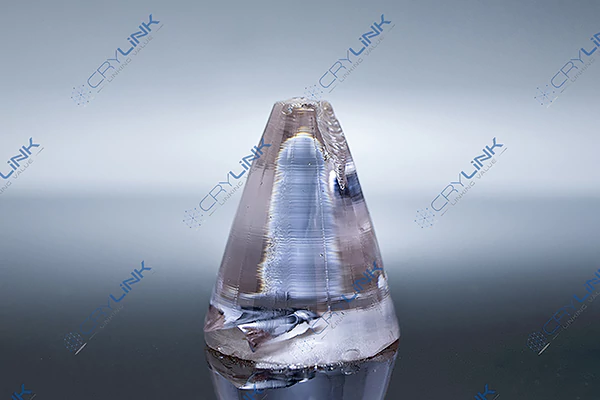Introduction
LBO Crystal, or Lithium Triborate Crystal, is among the vanguards of nonlinear optical crystals. Their unmatched efficiency in frequency conversion makes them indispensable for a variety of laser applications. Let’s delve deeper into the amazing world of LBO Crystals and uncover their significant role in powering green light at 532nm and beyond.

The Science Behind LBO Crystals
The science behind LBO Crystals truly is fascinating and transformative. When discussing nonlinear optics, it’s essential to delve deeper into the very essence of how materials, especially LBO Crystals, respond to intense light sources. Traditional materials showcase a linear response; that is, the behavior of light remains relatively predictable as it interacts with these materials. However, nonlinear optics shatters this predictability. When certain materials, including the Lithium Triborate Crystals, encounter intense light, their response becomes, as the term suggests, nonlinear. This nonlinearity gives rise to a myriad of phenomena, with frequency doubling standing out among them.
Frequency doubling, in essence, is a process where lasers can effectively double their frequency, producing wavelengths that were previously unachievable. This evolution in laser technology has been instrumental in various fields, from advanced research to everyday practical applications. Imagine a world where the lasers’ capabilities are limited only to their original wavelength; the advent of nonlinear optics expanded those horizons significantly.
Speaking of the star of this show, the LBO or Lithium Triborate, its discovery in the latter part of the 20th century marked a turning point. This wasn’t just another crystal. Its crystalline structure set it apart. This structure, which might seem inconspicuous at the microscopic level, is the very reason behind the crystal’s incredible nonlinear optical properties. Every atom, bond, and lattice in the LBO crystal is meticulously arranged, giving it the power to redefine how we perceive and utilize light.
Over the years, the implications of these properties have been profound. The LBO crystal didn’t just make waves in the academic or research community; it opened avenues for laser applications that were previously deemed unfeasible. From intricate surgeries requiring precise laser beams to advanced communication systems leveraging the unique properties of the LBO crystal, the impact has been widespread and revolutionary.
In conclusion, while the terminology and science behind LBO Crystals might seem complex, the concept and its significance are monumental. By understanding and harnessing the power of nonlinear optics and the unique structure of LBO Crystals, modern science has taken a giant leap into a brighter, more illuminated future.

LBO’s Role in Intracavity Doubling of Nd:YAG Lasers
LBO’s interaction with Nd:YAG lasers represents a harmonious merger of crystal technology with advanced laser physics. When we speak about intracavity doubling, we are essentially referring to the process that happens within the laser cavity itself. Within this confined space, the magic of frequency doubling takes place, and LBO is the linchpin that makes it all possible.
To appreciate this magic, let’s take a closer look at the process. Nd:YAG lasers typically produce an infrared light with a wavelength of 1064nm. While this wavelength has its applications, there are many scenarios where a different hue, especially in the visible spectrum, is desired. This is where the LBO crystal’s prowess in nonlinear optics comes into play.
By introducing an LBO crystal into the laser cavity, the 1064nm infrared light undergoes a remarkable transformation. Leveraging the crystal’s nonlinear characteristics, this light is effectively “doubled” in frequency but “halved” in wavelength. The outcome? A striking 532nm green light.

This transformation isn’t just about achieving a color change; it’s about amplifying the possibilities of light applications. The 532nm green light produced is not just any green. It’s a hue of unparalleled purity, exhibiting vibrancy and brightness that’s hard to achieve with other mediums. The clarity of this green light lends itself to a myriad of applications, from precise medical procedures to high-definition displays and beyond.
Moreover, the consistency and reliability of the LBO’s frequency doubling capabilities ensure that this process isn’t a one-time wonder. Every time an Nd:YAG laser beams through an LBO crystal, the resultant green light is as pure and clear as before, showcasing the crystal’s impeccable performance.
The alliance of LBO with Nd:YAG lasers epitomizes the advancement in optical science. It’s a testament to how understanding and harnessing the unique properties of materials can lead to innovations that not only push the boundaries of what’s possible but also enrich our everyday experiences with light and color.

Advantages of LBO in Nd:YAG Laser Doubling
The integration of LBO in Nd:YAG laser doubling has revolutionized the laser industry, primarily due to the myriad of benefits these crystals offer. When experts discuss LBO’s advantages, two terms inevitably take center stage: efficiency and phase-matching. But what makes these attributes so significant?
When we talk about high efficiency in the context of LBO crystals, we’re referring to the remarkable ability of these crystals to convert a substantial portion of the input infrared light into the desired green light. This isn’t a mere slight enhancement; the efficiency levels are groundbreaking.
The intrinsic structure of the LBO, with its meticulously arranged lattice and atomic configurations, acts as a potent catalyst for this conversion. In practical terms, this efficiency means that devices and systems employing LBO for frequency doubling can achieve more with less. Less energy wastage, less heat production, and in many cases, a reduction in operational costs. In essence, the LBO’s high conversion efficiency makes processes not just feasible, but also economically and environmentally viable.
Now, transitioning to the concept of phase-matching, this is where the LBO truly flaunts its versatility. Phase-matching, in simple terms, ensures that light waves align perfectly, maintaining their coherence as they pass through the crystal. LBO’s broad phase-matching range is a testament to its adaptability. Whether the conditions are fluctuating or there’s a variation in input wavelengths, the LBO consistently ensures that the output green light retains its pristine quality. This adaptability is particularly beneficial in real-world scenarios where lasers might be subjected to varying external conditions or power levels. With LBO, the assurance is clear: the output will be consistently high-quality, irrespective of the circumstances.
Together, these attributes make LBO crystals not just a good choice, but often the best choice for Nd:YAG laser doubling, promising efficiency and consistency in a world that demands nothing less.

Key Properties of LBO Crystals
LBO crystals stand as a paragon in the realm of nonlinear optics, thanks to a trio of defining properties that set them apart. Each of these properties not only complements the function of the LBO but also ensures that they are unparalleled in their performance.
When considering the world of lasers, the generated heat is a persistent challenge. Excessive heat can cause inefficiencies, reduce output quality, or even damage the components. This is where the excellent thermal conductivity of LBO crystals shines through. By efficiently dissipating the absorbed heat, LBO crystals maintain their stability even under intense laser operations. This effective heat management is pivotal, particularly in applications where continuous or high-power laser operations are the norm. It ensures longevity, reduces the need for frequent maintenance, and ensures the reliability of systems incorporating these crystals.
Yet, thermal conductivity isn’t the sole strength of LBO. When subjected to powerful laser beams, optical components are at risk of being damaged. This risk is mitigated with LBO crystals, thanks to their high damage threshold. This resilience translates to prolonged crystal life, reduced downtimes, and an assurance that even under the most rigorous conditions, the LBO crystal remains unscathed. It’s akin to having a fortress wall that stands unyielding even when bombarded relentlessly.
Lastly, the intricate dance of light waves demands precision, especially in nonlinear optics. Phase matching is the maestro that ensures this dance is harmonious, leading to optimal frequency conversion. LBO crystals, with their adeptness in adjusting their refractive index for varying wavelengths, are experts in this domain. When the objective is to achieve that impeccable 532nm green light, LBO’s phase-matching capabilities guarantee that the light waves align seamlessly, producing the desired output with unmatched precision.
In essence, these key properties of LBO crystals aren’t just standalone features; they synergistically ensure that in the intricate ballet of light manipulation, LBO always delivers a flawless performance.
Applications Beyond 532nm Green Light
Beyond their renowned capability for 532nm green light production, LBO crystals cast a wider net of applications, notably in advanced light manipulations. Their role in frequency tripling and quadrupling, for instance, ushers in the generation of ultraviolet beams, which have become indispensable in avant-garde research and revolutionary medical treatments. Furthermore, the intrinsic phase-matching prowess of LBO crystals also positions them as frontrunners in optical parametric oscillation. By seamlessly mixing multiple input frequencies, they pave the way for an expansive spectrum of laser applications, underscoring their versatility and indispensability in modern optical science.
Conclusion
In the realm of nonlinear optical crystals, LBO Crystal stands out as a marvel. Its pivotal role in producing 532nm green light via intracavity doubling of Nd:YAG lasers only scratches the surface of its capabilities. Its excellent thermal conductivity, high damage threshold, and optimal phase matching properties make it indispensable in the world of laser applications. As technology progresses, LBO’s potential applications seem boundless, ushering in a new era of laser-based solutions.
FAQs
- 1. What is the primary use of LBO crystals?
LBO crystals are primarily used for their nonlinear optical properties, especially in frequency conversion applications like producing 532nm green light. - 2. How does LBO differ from other nonlinear optical crystals?
LBO stands out due to its excellent thermal conductivity, high damage threshold, and broad phase-matching range. - 3. Are LBO crystals durable under high laser intensities?
Absolutely. LBO crystals have a high damage threshold, making them resilient to intense laser beams. - 4. Beyond green light production, what are other applications of LBO crystals?
LBO crystals are also used in frequency tripling, quadrupling, and optical parametric oscillation, among other applications. - 5. Why is phase matching important in LBO crystals?
Phase matching ensures that the crystal can adjust its refractive index for different wavelengths, allowing for optimal frequency conversion. This property is essential for producing precise wavelengths, like the 532nm green light.

Frank
Frank graduated from the University of Shanghai for Science and Technology, majoring in optics. As a technical engineer at Crylink Company, he deeply understands crystal materials and laser components.
Related Video(s) with this Article
Related Product(s) with this Article
Related Application(s) with this Article
